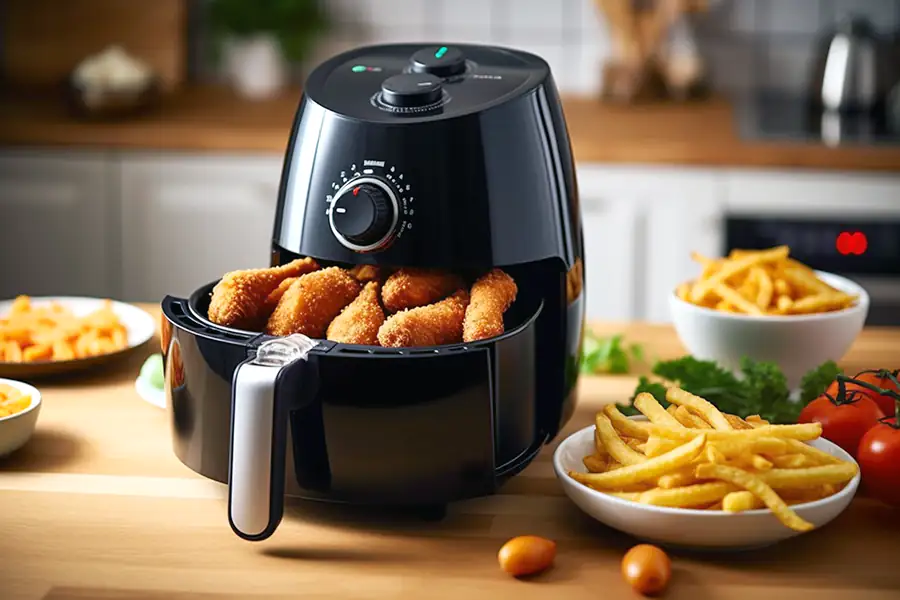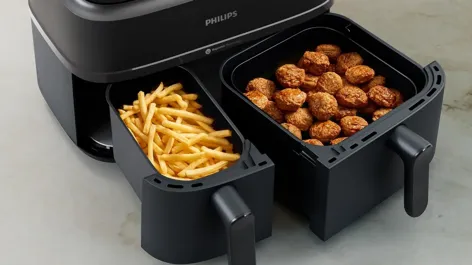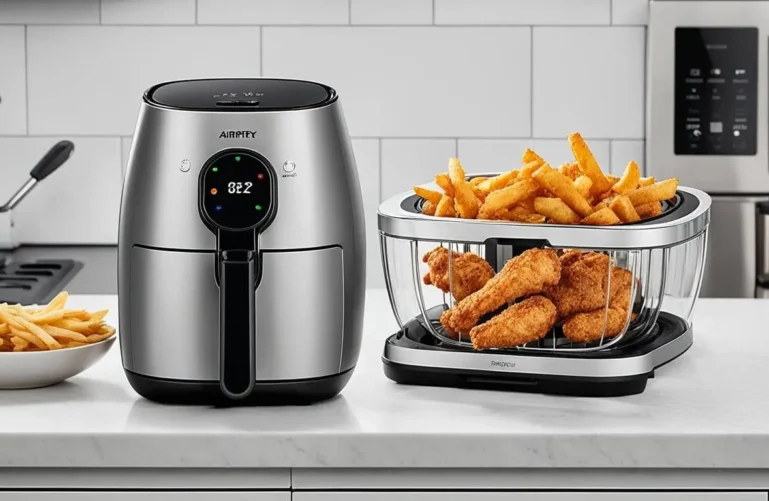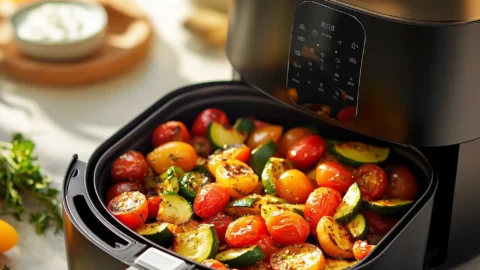Air fryers have become culinary game-changers for many households, promising crispy textures and savory flavors with a fraction of the oil typically required by deep-frying. Whether you’re aiming to eat healthier, save time, or simply expand your cooking repertoire, an air fryer can prove a handy addition to your kitchen. But with so many options—various sizes, features, and technologies—how do you pick the right one?
In this guide, we’ll walk you through the factors to consider before buying an air fryer. From capacity and functionality to energy consumption and budget, this article will help you select the optimal air fryer for your lifestyle. By the end, you’ll be ready to make an informed purchase and start enjoying all the crispy, golden goodness your new appliance can offer.
1. Understanding What an Air Fryer Does
How Air Fryers Work
Air fryers circulate hot air rapidly around the food, which is generally placed in a perforated basket or on a rack. This convection-style cooking results in a crispy exterior while locking in moisture. While a small amount of oil can be used, it’s far less than in traditional deep-frying methods—some recipes only require a light spray or brushing of oil.
Benefits of Air Fryers
- Healthier Cooking: Reduced oil means less fat and fewer calories, making air-fried meals a healthier alternative to deep-frying.
- Versatility: Beyond just ‘frying,’ these appliances can bake, roast, or even grill, expanding your culinary options.
- Energy and Time Efficiency: Many air fryers preheat much faster than traditional ovens, and the rapid hot air circulation helps cut down cooking time.
- Less Mess: No large pots of oil to dispose of and fewer splatters around your stove.
But not all air fryers are created equal. Let’s break down the major features you should focus on when deciding which model to bring home.

2. Capacity and Size
Capacity for Your Household
Air fryer capacities range widely, from small 1.5–2-quart units (ideal for one or two people) to extra-large 8-quart (or bigger) models intended for families or for cooking in bulk. Matching capacity to your needs is crucial:
- Individuals or Couples: A small to mid-size 2–4-quart air fryer can be sufficient, though a 3.5- or 4-quart size can also handle the occasional dinner guest.
- Families of 4–6: Look for at least 5–6 quarts. This size can accommodate about 2–3 pounds of fries or a typical weeknight dinner’s proteins and vegetables.
- Entertaining Large Groups: Extra-large 7–10-quart (or more) units exist for batch cooking. Some large models include multiple racks or compartments, enabling you to cook different foods simultaneously.
Footprint and Kitchen Space
Air fryers can be bulkier than they appear in pictures. Pay attention to:
- Dimensions: Check width, depth, and height to ensure it fits your countertop or under-cabinet space.
- Weight: Heavier models are less portable; if you plan to store the air fryer between uses, a lighter unit might be more convenient.
- Design and Aesthetics: Some air fryers come in sleek, modern finishes that blend nicely with kitchen decor. Consider color choices if appearance matters.
If you have limited counter space, you may prefer a compact model, but be mindful that a small capacity might restrict the amount of food you can cook at once.
3. Basket Style vs. Oven-Style Air Fryers
Basket/Drawer-Style Air Fryers
Often the most recognizable form, these air fryers feature a pull-out basket or drawer. Food is placed in the basket, and hot air circulates it. Advantages include:
- Ease of Use: Simple design and intuitive operation—just pull the basket out, flip or shake the food, and slide it back in.
- Compact Footprint: Typically smaller than oven-style models, suitable for minimal counter space.
- Great for Small Batches: They excel in cooking items like fries, wings, or mozzarella sticks quickly.
On the flip side, it can be trickier to cook multiple food items with separate cooking times in a single drawer, unless you cook them in sequence.
Oven-Style Air Fryers (Air Fryer Toaster Ovens)
These resemble mini convection ovens, often with a front door and multiple racks inside. Benefits include:
- Multi-Functionality: Besides air frying, many can toast, bake, broil, or even dehydrate.
- Larger Cooking Area: You can spread food out on racks, preventing overlap that might occur in small baskets.
- Cook Different Foods at Once: With multiple racks, you can separate, say, chicken wings and vegetables so they finish simultaneously.
However, they can take up more counter space and may be more expensive. If you need a versatile do-it-all device that can replace (or supplement) your toaster oven, this style might be worth the trade-off in size.
4. Temperature Range and Controls
Temperature Range
Most air fryers operate between 180°F (82°C) and 400°F (204°C). However, some recipes (e.g., dehydrating fruits or slow roasting) might need lower or higher temperatures. Be sure the air fryer you choose supports the temperature range for the cooking methods you plan to use.
Lower temperature capability (down to 120–150°F) is beneficial for dehydrating or warming, while higher limits (up to 450°F) are excellent for quickly crisping foods or finishing dishes like pizza.
Control Types: Manual vs. Digital
- Manual Dials: Some models have simple knobs to set temperature and time. They are typically budget-friendly and user-friendly but less precise.
- Digital Panels: Offer exact temperature increments, preset cooking programs, and timers. If you enjoy consistency and using special presets (e.g., fries, chicken, fish), a digital interface can be convenient.
- Smart Features: High-end models might connect to Wi-Fi and allow app-based control or recipe suggestions. While not mandatory, these can offer convenience if you embrace smart kitchen gadgets.
A digital control panel with a clear display often proves beneficial for monitoring progress and switching functions (like air fry, roast, or bake) with one-touch settings.

5. Power and Wattage
Air fryers typically range from about 1,200 watts up to 2,000+ watts for larger or higher-performance models. Higher wattage can mean:
- Faster Preheat: The appliance reaches the set temperature more quickly.
- More Consistent Heat: You’ll often get more even cooking performance, especially for denser items.
- Higher Energy Consumption: While still typically more efficient than using a full-size oven, a powerful air fryer draws more electricity.
For quick crisping and shorter cooking times, a more powerful unit is advantageous. However, ensure your kitchen’s electrical circuit can handle the appliance, particularly if it’s over 1,500 watts.
6. Cooking Presets and Additional Features
Most modern air fryers come with preset functions tailored to popular dishes—like fries, chicken, or seafood. Some advanced models even include bacon, pizza, and dessert presets. While not strictly necessary, presets help beginners by automating temperature and cooking time for specific foods.
Beyond presets, look for:
- Keep Warm Function: Keeps the food at serving temperature without overcooking.
- Preheat Setting: Helps the fryer come to temperature before you add the food, ensuring consistent results.
- Shake Reminder: Alerts you to toss or flip the contents midway through cooking for even browning.
- Rotisserie or Rotating Basket: Some oven-style fryers have a rotating basket, ideal for fries or wings, or a rotisserie function for chicken.
If you enjoy exploring varied cooking techniques, these add-ons can expand your culinary possibilities.
7. Build Quality, Materials, and Nonstick Surfaces
Basket/Interior Material
The basket or cooking chamber quality is critical. Many models use a nonstick coating—often Teflon or a ceramic-based surface—enabling easy cleanup and reducing oil usage. Be aware, though:
- Nonstick coatings can scratch if you use metal utensils. Opt for silicone or wooden tools to prolong the surface.
- If you’re concerned about potential chemical off-gassing from Teflon at high temperatures, look for BPA-free or ceramic-coated baskets labeled as PFOA/PTFE-free.
Exterior Build
Stainless steel exteriors may appear premium and resist staining, while plastic exteriors are more lightweight and affordable. Consider whether you want a cool-touch handle or body to reduce burn risks. Some models also feature a transparent window so you can monitor cooking progress without opening the drawer or door.

8. Cleaning and Maintenance
Air fryers are generally straightforward to maintain, especially if the components are dishwasher-safe. Some points to check:
- Removable Parts: Is the basket or tray fully removable? This greatly simplifies post-cooking cleanup.
- Dishwasher-Safe: Many baskets and racks are top-rack dishwasher-friendly, but confirm with the manufacturer’s instructions.
- Grease Management: Ensure the design includes a drip tray or a system that collects grease, preventing spills inside the chamber.
- Access to Heating Element: In basket-style fryers, grease and food bits can sometimes splatter onto the heating coil. If that area is hard to reach, cleaning can become a chore.
Easier cleaning encourages frequent use, as you won’t dread scrubbing after every meal.
9. Price and Warranty
Air fryers typically span a broad price range:
- Budget Models ($50–$80): Basic manual units with modest capacity and fewer features. Decent for beginners or occasional use.
- Mid-Range ($80–$150): Often include digital controls, more presets, and better capacity. Quality tends to be more consistent, and you’ll see brand-name offerings here.
- High-End ($150–$300+): Typically larger capacities, additional cooking modes (bake, rotisserie, dehydrate), higher wattage, more robust build, and smart features.
If you see yourself using the fryer frequently for various cooking tasks, investing in a mid-to-high range model might pay off in durability and performance. Check the warranty period—many reputable brands offer 1-year limited warranties, while some extend to 2 years or more. A longer warranty is a good sign of the manufacturer’s confidence in product longevity.
10. Energy Consumption and Efficiency
Air fryers can be more energy-efficient than a standard oven because:
- They have smaller cavities to heat, reaching cooking temperature faster.
- The intense fan circulation reduces cooking time for many dishes.
Still, you might consider wattage as part of your overall electricity usage. If you’re energy-conscious, keep an eye out for any efficiency claims or official energy rating certifications (though these are less common in small kitchen appliances compared to larger ones like refrigerators or dishwashers).
11. Noise Level
The internal fan of an air fryer can generate a noticeable humming or blowing noise. While it’s usually not too loud—akin to a microwave or small ventilation fan—sensitive users may prefer a quieter model. Unfortunately, most manufacturers don’t clearly list decibel levels, so reading user reviews or checking in-store demos might be the best way to gauge noise output.
12. Safety Features
Heat and hot oil (even if minimal) can pose hazards if not managed properly. Look for:
- Automatic Shut-Off: The fryer turns off when the basket is removed or when the timer ends, preventing overcooking or overheating.
- Cool-Touch Exterior: Reduces the risk of accidental burns if the unit is brushed against while hot.
- Secure Basket Lock: Ensures the basket won’t accidentally fall out, especially when shaking or moving it.
- Non-Slip Base: Prevents the device from sliding on the countertop.
- Overheat Protection: Built-in sensors can trigger shut down if the device exceeds safe temperatures.
Such features add peace of mind, especially if children frequently roam the kitchen area.
13. Assessing Brand Reputation and Reviews
With so many brands in the air fryer market—Philips, Ninja, Cosori, Instant, Cuisinart, and many more—sifting through models can be time-consuming. Focus on trusted names for proven performance and reliability, but also read consumer and professional reviews. Online user feedback can reveal:
- Long-Term Durability: Are there complaints about the coating peeling or the fan dying out after a few months?
- Customer Service: How responsive is the brand to warranty claims?
- Accuracy of Temperature and Timer: Does the actual temperature match the set temperature?
- Cooking Performance: Taste and texture results for fries, chicken wings, baked goods, etc.
Additionally, watch out for recurring issues like fused electronics, plastic odors that don’t subside, or squeaky baskets.

14. Tips for Getting the Most Out of Your Air Fryer
- Preheat, If Necessary: Some models heat quickly enough that preheating isn’t mandatory, but following recipe instructions can yield better texture.
- Avoid Overcrowding: Spread food in a single layer for even air circulation. Overfilling the basket can lead to uneven cooking.
- Shake or Flip: Many foods, especially fries or breaded items, benefit from shaking or flipping halfway through.
- Lightly Oil Foods: A small amount of oil can significantly improve crispiness without negating the health benefits of air frying.
- Experiment with Recipes: From roasted veggies to donuts, air fryers can handle a surprising variety of foods—there’s more to them than just French fries.
Being mindful of these best practices helps you appreciate the full potential of your new kitchen companion.
15. Conclusion
Choosing an air fryer boils down to balancing capacity, functionality, and budget with your culinary goals. If you mostly want crisp fries or chicken wings for two, a compact basket-style air fryer with simpler manual controls may suffice. For larger families who desire versatility—like baking pizzas, roasting whole chickens, or dehydrating fruit—an oven-style air fryer with higher wattage, multiple racks, and extensive presets can be a true game-changer.
Be sure to confirm the dimensions, check for easy cleanup features, and consider safety aspects before finalizing your purchase. Dig into brand reputation and user reviews to ensure consistent performance and durability. While additional features like preset cooking modes and smart connectivity can enhance convenience, the core objective remains the same: delivering crispy, delicious results with minimal oil.
By focusing on the key factors highlighted in this guide—capacity, basket vs. oven style, temperature range, wattage, build quality, and maintenance—you’re on track to finding an air fryer that aligns with your lifestyle. Once you bring it home, explore recipes and get creative. With a little experimentation, you’ll discover that an air fryer isn’t just about healthier fries—it can open a world of fast, easy, and mouthwatering meals right on your countertop. Enjoy the crunchy delights and happy air-frying!
